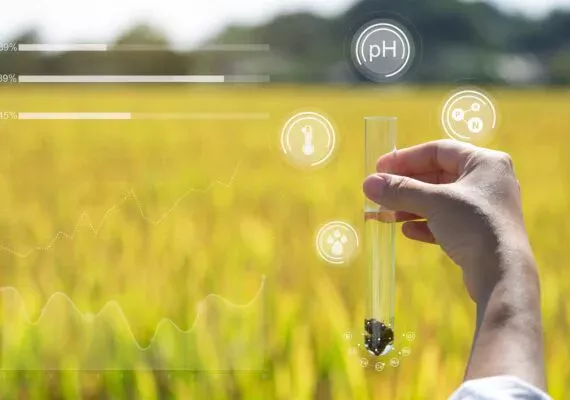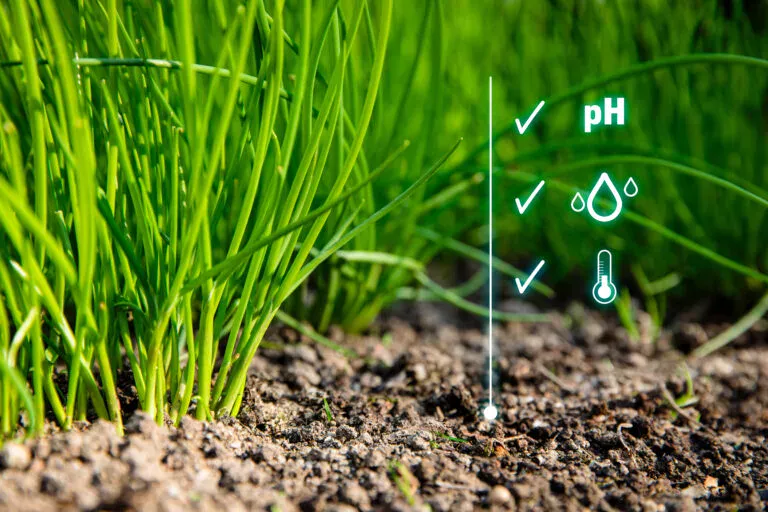
WHAT DOES IT MEAN FOR SOIL TO BE FERTILE??
To maintain balance in nature, it is necessary to sustainably manage its resources, including proper soil management. Among the greatest threats to soil fertility are:
soil acidification;
soil pollution including heavy metals;
soil erosion.
But what exactly is soil fertility? It is the ability to meet the life needs of the plants growing in it. Thanks to this, they can grow, develop, and yield abundantly. Currently, a significant decrease in soil fertility can be observed. This is why humans have started seeking ways to improve their parameters.
DIRECTLY IMPACTING SOIL FERTILITY ARE:
- how the land is cultivated;
- fertilization (type and method);
- crop rotation and the sequence of plants in the field;
- adequate organic matter content.
The main parameter that determines soil fertility is the content of soil organic matter, called humus. It usually constitutes about 70–80% of all substances in the soil. Soils in Poland have a humus content ranging from 0.6 to 6%, although it is estimated that most of them contain less than 2%. The highest amount of humus is found in soils such as chernozem, black earth, loams, and rendzinas. The least amount, on the other hand, is found in brown and podzolic soils.
Humus plays a very important role. Thanks to it, the soil’s ability to retain water increases, and as a result, it also has greater nutrient storage capabilities. Humus in the soil also promotes better aeration and improves bacterial flora.
WHAT ARE THE WAYS TO IMPROVE SOIL QUALITY?
The main ways to improve soil quality include:
- skillful use of natural and organic fertilizers;
- crop rotation and proper succession of plants;
- actions aimed at bringing the soil pH to the optimal level – e.g. liming treatment;
- enriching the soil naturally.
USING NATURAL AND ORGANIC FERTILIZERS
Natural and organic fertilizers are invaluable sources of organic matter and also enrich the soil with nutrients. Applying manure to the field significantly improves soil quality. For example, applying 10 tons of manure to a field and its subsequent decomposition will supply the soil with:
- about 50 kg of nitrogen;
- about 10 kg of phosphorus;
- about 60 kg of potassium;
- about 30 kg of lime;
- about 10 kg of magnesium.
Turning straw back into the soil is also beneficial. It is an excellent source of carbon. Due to the imbalance of carbon to nitrogen in straw and the risk of soil organisms using nitrogen from the soil during straw decomposition, it is necessary to add nitrogen during the treatment, for example in the form of urea.

CROP ROTATION AND PROPER PLANT SUCCESSION
Growing the same plant in the same place for several years in a row leads to soil depletion, erosion, acidification, and biological impoverishment. Therefore, it is extremely important to use crop rotation and do it correctly. This way, the humus in the soil will be maintained at a constant level. Good crop rotation involves a large biodiversity of plant species grown successively. On light soils, at least 3 different species should be grown, and on heavy soils, 4–5 plant species.
The plants in such crop rotation can be divided into three groups:
- plants that enrich the soil, e.g.:
- perennial fodder;
- legumes;
- intercrops for green manure;
- soil-depleting root crops;
- corn;
- neutral plants:
- grains;
- oil plants.
Very important for soil fertility are so-called intercrops. Thanks to them, the humus content in the soil increases, as does its biological activity. Good results are achieved by plowing in the intercrops in spring – the plants will grow in the soil over the winter, protecting it from nitrogen loss and erosion.
PRESTORING THE OPTIMAL SOIL PH THROUGH LIMING
Acidic soils are not conducive to plant growth. Only some species cope with such conditions. Too acidic soil also prevents plants from taking up nutrients, resulting in poor growth. Therefore, liming the soil is an essential agricultural practice in such situations. It should be remembered that liming is a long-term process, not a one-time treatment. Through it, the soil’s proper pH can be restored, allowing plants to absorb nutrients from the soil.
The dosage of lime is selected according to the type of soil and the requirements of the plants that will grow in the area. The best time for liming is autumn or spring. In autumn, the soil can be limed after harvesting, while in the spring period, the soil should be limed at least a month before planned sowing or planting. Liming can also be done as top dressing using granular lime, such as Polcalc III Generation or SuperMag.

NATURAL WAYS TO ENRICH THE SOIL
Natural methods of enriching the soil include:
- adding preparations that enrich it with bacterial microflora to the soil;
- using humic acids, which are a component of soil humus;
- actions aimed at reducing the area of agricultural land;
- applying manure and slurry to the field;
- using green fertilizers as a pre-crop and after-crop;
- enriching the soil with compost.






